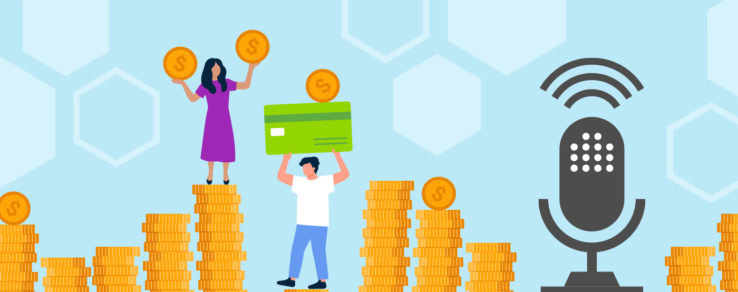As utility customers face unprecedented financial challenges, they need more from their utility providers than just energy or water. They need understanding, empathy and practical assistance.
Questline Digital’s recent webinar, “Supporting Utility Customers Through Financial Hardship,” provided valuable insight from Joe Pifher, Creative Director at Questline Digital, and Jill Vohr, Director of ENERGY STAR Product Marketing and Communications at the U.S. Environmental Protection Agency (EPA). They shared advice on helping low- and middle-income customers, including tools and resources that utilities can leverage.
Utility Customers Need Financial Support
Pifher kicked off the webinar by sharing the current state of the national financial crisis. According to the U.S. Census Bureau, 37.9 million people are living in poverty. Additionally, the costs of everyday necessities, such as electricity, continue to increase daily. Research shows that consumers paid 14.3% more for electricity in 2022 than in 2021.
As electricity prices continue to increase, it’s critical that utilities focus on assisting customers to ease the burdens they face.
Ways to Support Customers During Challenging Times
First and foremost, utilities must observe how customers’ budgets and behaviors shift. Pifher advises utilities to listen to their customers and watch their behaviors. This is an opportunity to learn about what customers need.
“They have needs that they may not be telling you about specifically, but their behaviors are going to speak for them,” Pifher says. “Support them and give them programs that are going to give them what they need.”
These programs include payment assistance, financial aid programs, high bill/budget billing solutions and product rebates and discounts. “Help market these things to customers because they really want them and need them,” Pifher says.
Make Sure Customers Know that Financial Support is Available
Utilities can have all the necessary resources, but without an effective and engaging communication strategy, customers might still be unaware of available assistance. By developing marketing campaigns that can help customers understand their options, and connecting them to available tools and resources, your utility becomes a trusted resource.
Pifher highlighted proactive engagement strategies that prioritize customers’ needs, emphasizing sending content on a consistent basis to foster trust and provide value. “You’re reaching out to those customers in between transactional communications. You’re not just asking them for money, you’re giving them support, educating them and entertaining them,” he says.
Pifher shared a few ways to send valuable content and boost customer engagement:
- Emails
- Newsletters
- Welcome Series
- Short-form videos
For utilities, building awareness is key to connecting customers to resources. By sending content on a consistent basis, customers become educated about programs and services, driving interest and participation. Over time, this boosts long-term customer satisfaction.
Additionally, Pifher advises personalizing communications to each recipient and removing barriers to assistance.
“Personalize the communications you send to that person. Don’t send them everything, send only what is needed, send them what they want to see,” Pifher says. “If the barriers are too high, they’re not going to click through and they’re not going to convert.”
Examples of Utility Assistance Campaigns
To emphasize the importance of customer support programs, Pifher shared real-world case studies of successful utility assistance campaigns.
For example, PSE&G wanted to provide financial assistance to its customers with past-due balances. The utility partnered with Questline Digital to create an email campaign explaining the benefits of payment arrangements. The email included a personalized one-click landing page with payment term options. As a result, nearly 12,000 of the 73,000 recipients enrolled in just a few days.
Another example highlighted FirstEnergy and its approach to reaching customers through personalized videos. Questline Digital worked with the utility to send unique videos to each customer with calls-to-action directing them to beneficial programs. Each video recommended products that were relevant to each recipient, minimizing the barriers to adoption.
Assistance Tools and Resources Available from ENERGY STAR
Vohr joined in on the discussion, sharing a multitude of tools and resources that can help utilities leverage the Inflation Reduction Act.
She shared helpful insights from ENERGY STAR research regarding customers’ relationships to their utilities. One interesting finding was customers’ perspective on program rebates. Research also found that customers mistrusted their utilities when they promoted energy savings.
Additionally, Vohr shared that education is critical to helping customers understand rebates and incentives, as well as how these programs can help them.
“Think about your audience when you’re designing your programs,” Vohr says. “It’s not just in terms of how you market them or how you message them, but actually how you’re designing the program itself. That is the biggest takeaway: Address their challenges and motivators.”
Vohr summarized her insights, explaining:
- Design your income-qualified programs to address the challenges and motivations for this audience relative to home upgrades. Offer instant rebates and leverage IRA incentives.
- Focus your utility’s messaging on planning vs. proactive replacement and motivate customers with energy and money savings. Don’t forget about other drivers for this audience, including family, health and environment.
- Take advantage of free guidance, resources and marketing materials from ENERGY STAR.
- Leverage the credibility of and trust in ENERGY STAR for consumer engagement.
How to Support Your Utility Customers Through Financial Hardship
There are many tools and resources available for utilities to reach low- and medium-income customers. With an effective and engaging strategy, your utility can connect customers to the support and assistance that they need.

